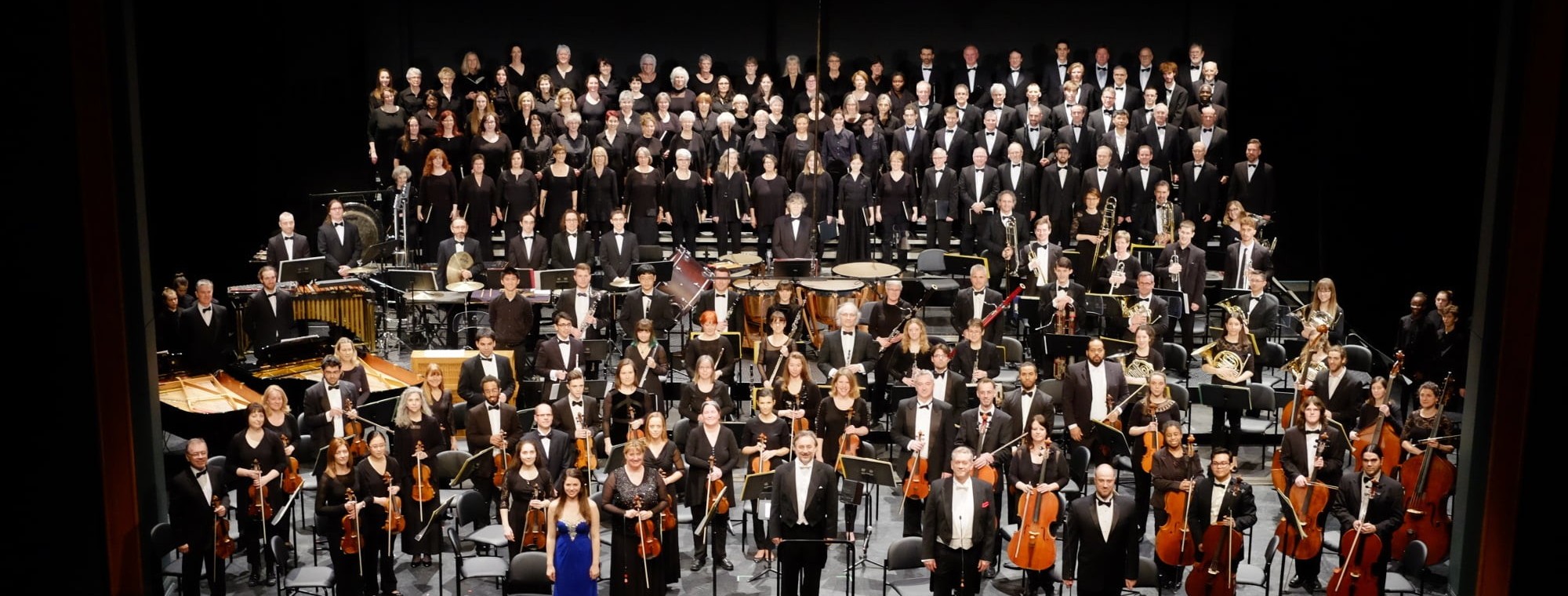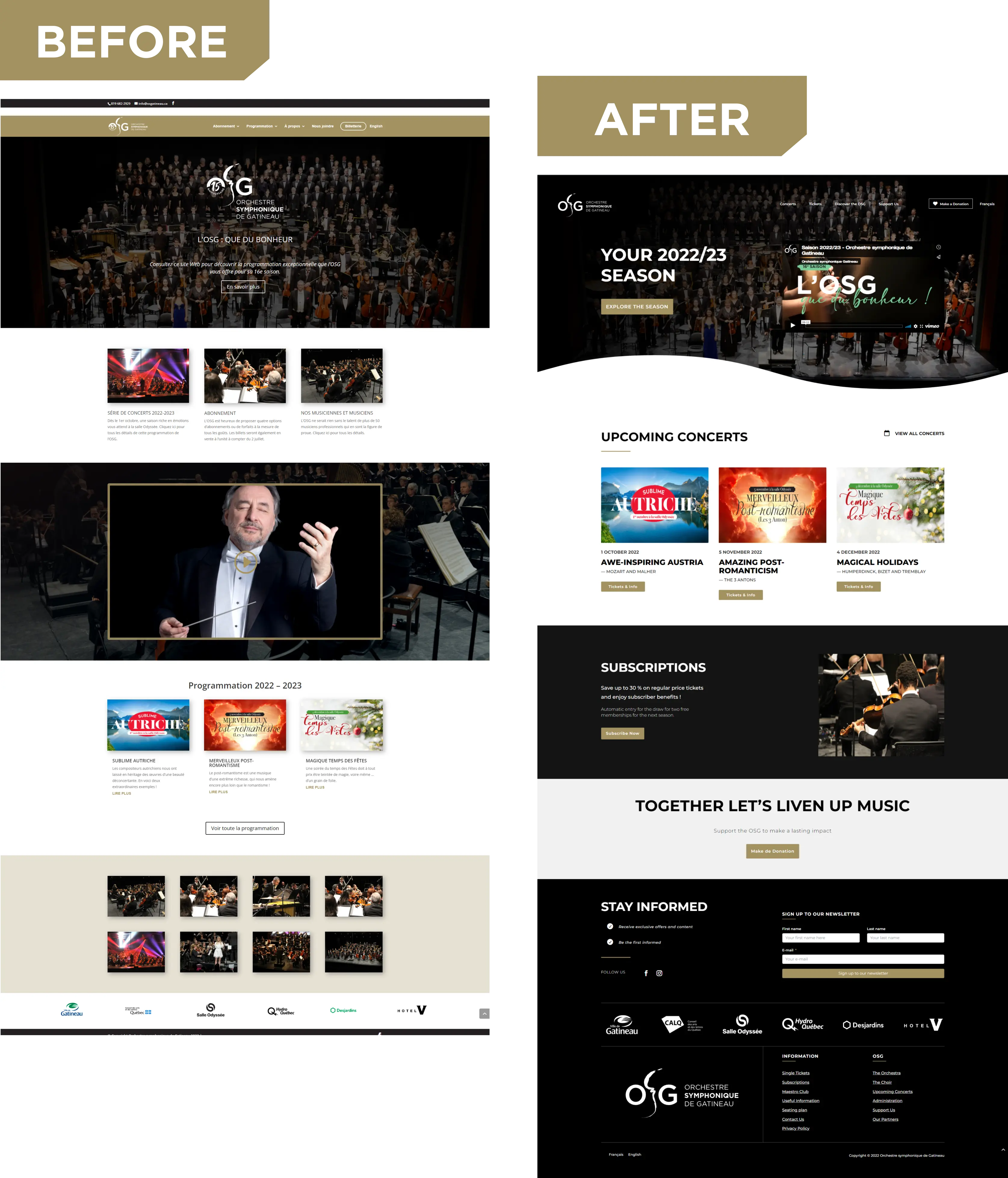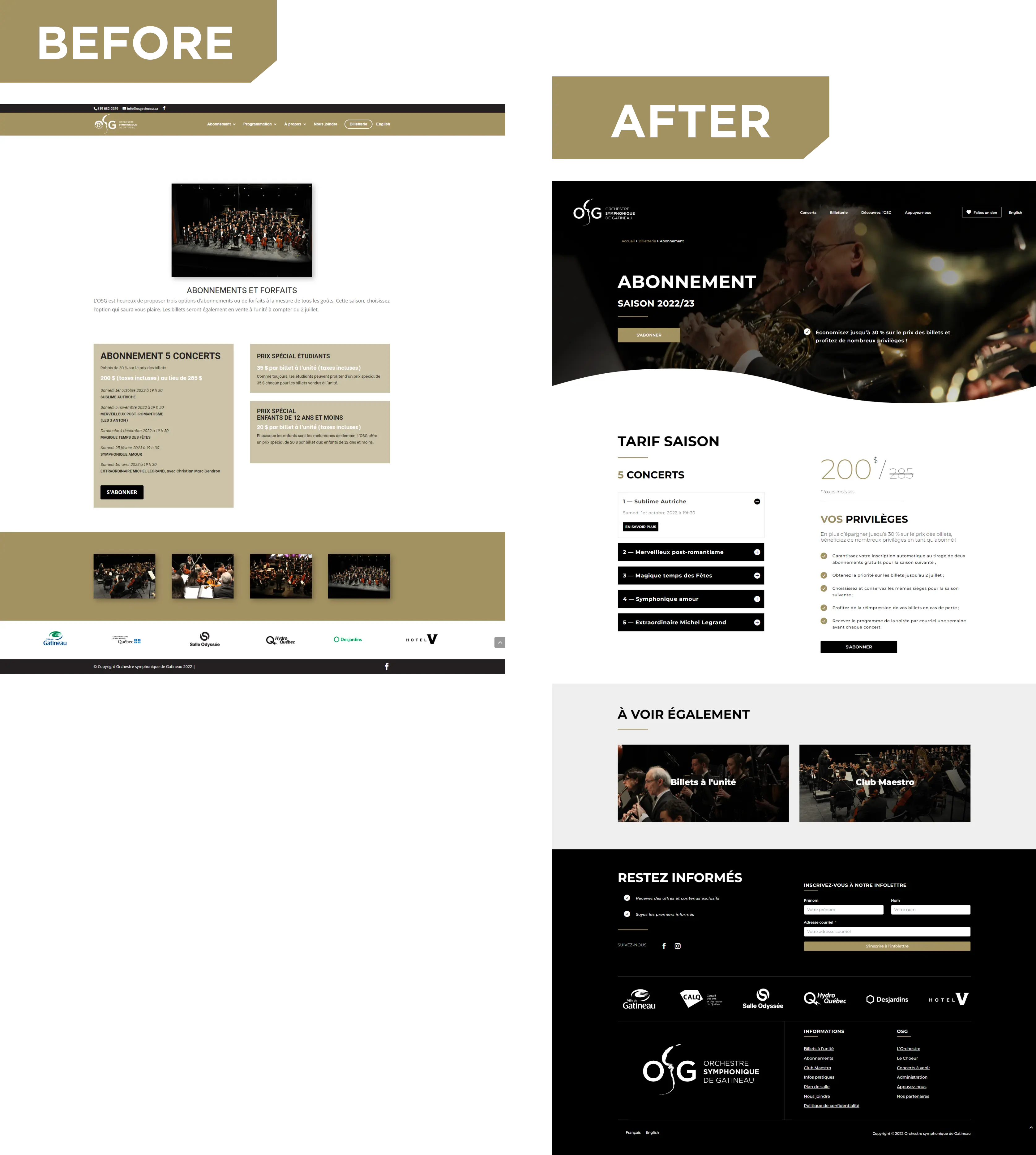Orchestre symphonique de Gatineau – Bachelor Thesis Project
As part of my Bachelor’s thesis in Media Engineering, I partnered with the Orchestre symphonique de Gatineau in Quebec, Canada, to develop and deploy a comprehensive digital communication and marketing strategy. The project focused on redesigning the orchestra’s website, improving user experience, implementing new tools for newsletters and subscriptions, and laying the groundwork for future social media and digital advertising efforts.
Visit websiteContext
During the final year of my Bachelor's in Media Engineering, I spent a semester abroad at UQO (Université du Québec en Outaouais), located just across the river from Ottawa, marking the cultural and linguistic border between English-speaking and French-speaking Canada.
Wanting to align my Bachelor's thesis with both my technical skills and my passion for music (as an orchestra conductor myself), I reached out to the Orchestre Symphonique de Gatineau, a professional symphony orchestra based in the region. After an initial exchange with the orchestra’s general director, I was given the opportunity to collaborate with them on a project that would support their digital transformation. The entire collaboration was conducted remotely from Switzerland.
Thesis & Objectives
My Bachelor's thesis, titled “Development and Implementation of a Digital Communication and Marketing Strategy”, focused on helping the orchestra take a significant step forward in their digital transformation and on strengthening its overall communication strategy.
The project’s core objectives were to:
- Increase the number of single ticket sales for the 16th season (outside of subscriptions) while maintaining the current subscription rate, with a long-term acquisition perspective.
- Simplify the online purchase process for both subscriptions and individual tickets on the OSG website in order to improve the user experience.
- Strengthen loyalty among current audiences while also attracting new segments through more effective communication.
To achieve these goals, the project was structured around five key pillars:
- Research & Analysis: Auditing the orchestra’s digital ecosystem — website analytics, SEO performance, social media activity, newsletter structure, and ad campaign effectiveness.
- Benchmarking & Strategy: Analyzing comparable orchestras and institutions to identify best practices and define a strategic direction.
- Design & Implementation: Redesigning the website’s structure and visual identity using WordPress, improving its UX experience with navigation and content clarity.
- Content & Communication: Implementing a professional newsletter system with Mailchimp (custom templates and structure) and designing a sustainable social media content strategy.
- Digital Support: Recommending a digital agency for future ad campaign execution and preparing all necessary documentation to ensure continuity and implementation.
Methodology
To structure and manage the workload efficiently throughout the project, I applied the Scrum Agile framework, adapting it to suit a solo workflow. I organized the work into sprints, maintained a personal product backlog in ClickUp, and conducted regular self-reviews to reflect on priorities and adapt when necessary. This approach helped me stay agile, maintain momentum, and deliver results in a way that mirrored real-world collaborative processes — even while working independently.
The methodology emphasized:
- Autonomous sprint planning and retrospectives for continuous improvement.
- Incremental delivery, focusing on producing valuable outcomes in stages.
- Cross-domain integration, blending strategy, UX design, development, SEO, and communication.
- Documentation at each phase, to ensure transparency and future scalability.
Project outcomes
The project contributed to a meaningful step forward in the digital transformation of the Orchestre symphonique de Gatineau. The new website offered a significantly improved user experience, clearer navigation, and modern design adapted to both subscription and ticket sales flows. It was developed to be fully responsive, providing an optimized experience across desktop and mobile devices.
The implementation of a structured newsletter system, along with SEO improvements and a scalable content strategy, laid the foundation for future audience growth.
The orchestra reported greater operational clarity, positive feedback from users, and a better understanding of how to communicate with both loyal audiences and potential new attendees in the digital space.



